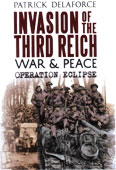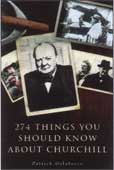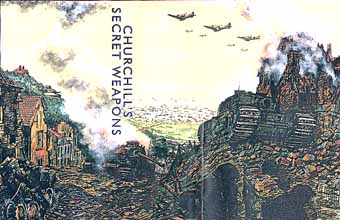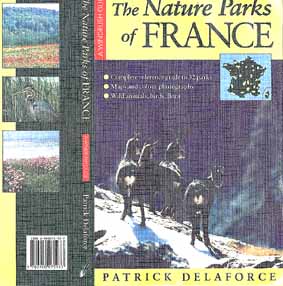 |
Patrick DelaforceOther books |
Back to Ken's genealogy site |
Back to Patrick's Index page |
Other books by Patrick Delaforce
New 11/5/2011! Published by Amberley:-

Invasion of the Third Reich War and Peace OPERATION ECLIPSE
Early in 1945 the British Liberation Army (BLA), who had battled their way from the Normandy beaches to the borders of Germany, embarked on Operation Eclipse. This was the 'end-game' of the Second World War, the unique military campaign to invade and conquer Hitler's Third Reich and liberate 20 million enslaved nationals from Holland, Denmark and Norway; to free multitudes of displaced persons (DPs) or slaves; and inter alia to free the survivors of twenty concentration camps and many Allied POW camps.
A thrilling race with Stalin's Red Army took place to reach the Baltic. A matter of a few hours and Denmark and Norway would have been swept into the evil Soviet empire. The Allied Military Government (AMG) brought law and order to 23 million German nationals in the allocated British zone of occupation (BAOR), and appropriate retribution too.
The author fought vigorously as a young RHA officer in the five great river battles - Rhine, Dortmund-Ems, Weser, Aller and the Elbe. Soon after VE Day he was the junior officer in War Crimes Tribunals in Hamburg and Oldenburg and witnessed Mr Alfred Pierrepoint administering the hanging of prison camp guards. This is his 40th book and the sequel to The Rhine Endeavour (Amberley, June 2010).
PRESS INFORMATION
A brand new title from one of WW2 History's most important names and a sequel to his recent The Rhine Endeavour.
Patrick Delaforce is one of the most respected names in WW2 history, having been in the thick of the action in several of the key operations of the war, wounded in Holland and again in Germany. He was awarded the Bronze Cross of Orange-Nassau and two Mentions in Despatches.
Features editors will be interested in the provocative subjects in the book: Hobart's Terrible Funnies; Thieving Magpies; Bergen-Belsen concentration camp; Donitz's Fourth Reich'; Hitler's Nuclear Option. Patrick can supply features (free) about your county regiments' exploits in Operation Eclipse. E-mail delaforce@langdene.plus.com
Published by Michael O'Mara Books:-

274 THINGS YOU SHOULD KNOW ABOUT CHURCHILL
This collection of little-known anecdotes, speeches, quotations and stories about one of the most famous statesmen of our era, celebrates his life and his numerous and wide-ranging achievements. Employing long out-of-print and forgotten sources author Patrick Delaforce has produced a multi-faceted account of the public and private lives of Winston Churchill.
274 Things You Should Know About Churchill takes as its subject a man alternately Prime Minister, wartime leader, master strategist, soldier, journalist, writer, inventor - in short, a true colossus of a man - Sir Winston Leonard Spencer Churchill (1874 -1960), undoubtedly the greatest Briton of his age. Born at the height of British imperial power, and twice elected Prime Minister, he galvanized the British people and,their allies to resist the onslaught from Nazi Germany and, later, Japan, and in doing so became the architect of the enemy nations' downfall.
274 Things You Should Know About Churchill is a celebration of the man, his life and his monumental achievements, presented as an attractive hardback gift book and written by expert in the subject.
£9.99 - For further information please contact Hannah Robinson on: 020 7819 5917 email: hannah.robinson@michaelomarabooks.com or Ana Sampson on 020 7819 5911 email: ana.sampson@michaelomarabooks.com
THE BATTLE OF THE BULGE
Hitler's Final Gamble

PATRICK DELAFORCE
£19.99
Published by Robert Hale:-
CHURCHILL'S SECRET WEAPONS
The Story of Hobart's Funnies
PATRICK DELAFORCE
NOW published in paperback for the first time by Robert Hale -
"Strong in detail and focuses on action at the sharp end." York Evening Press
"Patrick Delaforce's narrative of events moves swiftly, interspersed with personal reminiscences by men who felt the excitement of using these new weapons for the first time" Army Quarterly & Defence Journal
"A detailed look not only at the genesis of these latter-day siege engines but also at the way in which they were employed by the units equipped with them." Jersey Evening Post
In the desperate early days ot the Second World War when Britain fought alone against Adolf Hitler's Panzers and Luftwaffe, the Pnme Minister, Winston Churchill, wrote to his Cabinet: 'This war is not a war of masses of men hurling masses of shells at each other. It is by devising NEW weapons and above all by scientific leadership that we shall best cope with the enemy's supenor strength.'
Apart from Lord Cherwell ('The Prof') his brilliant main scientific adviser, Churchill relied heavily on two relatively unknown men who contributed enormously to the country's offensive capabilities. Millis Jefferis, an explosives expert, ran MDI which was also known as Churchill's Toy Factory'. This highly secret weapons development unit was originated by Churchill and reported directly to him. After the disaster at Dieppe a whole gamut of brutal new weaponry was devised (some by Churchill himself) specifically to break through concrete, wire and minefields along the French coast. Churchill also personally rescued from the Home Guard a talented tank expert, Major General Percy Hobart, who lormed, trained and then led a huge secret armoured division which stormed the Normandy beaches, and helped take all the Channel ports and every major river crossing. All these tank-based secret weapons, usually with animal names (Crab, Crocodile, etc.), supported every British and Canadian army formation and many Amercian units in the eleven months of savage fighting in NW Europe in 1944-5.

There is no doubt that Churchill's personal weaponry knowledge and his shrewd choice of his two 'protege's' helped win the war.
Patrick Delaforce served with the Royal Horse Artillery of the 11 th Armoured Division as a troop leader in Normandy and as FOO (Forward Observation Officer) in Holland and Germany during the Second World War. He was awarded the Bronze Cross of Orange-Nassau and was twice mentioned in dispatches during the campaign. He then joined the 7th Armoured Division at the end of 1945 and commanded Java Troop, 3rd Royal Horse Artillery After leaving the army he worked as a port wine shipper and in advertising before becoming a professional writer. Patrick Delaforce has written nine histories of World War Two formations and is the author of several other military titles as well as a number of travel books and biographies. Churchill's Secret Weapons is his thirtieth book.
216x138mm p/b 256pp, 31 b&w illustrations & l7 maps. Rights: World 0 7090 6722 4 £12.99 July 2000
Category: World War II
Any veteran or ex-Service families can buy a copy direct, signed by the author, at the special price of £12-00 inc packing and UK postage. Send orders direct with sterling cheque to 2,Hamilton Road Brighton UK, BN1 5DL Tel/Fax 01273-564372
Published by Windrush Guides:-
The Nature Parks of France
Discover the Green Heart of France in Les Parcs Naturels
lt is quite easy to miss - even drive through - many of France's lovely nature parks and be unaware of their existence. The six national parks (Ecrins, Cevennes, Pyrenees Occidentales, Mercantour, Vanoise and Port-Cros) have a neglible population, are often mountainous, but are very rewarding once found. There are also 26 PNRs (parcs naturels regionaux) some of which are in reach of the channel ports and make a most agreeable 'target' destination. They too, are often hidden in the arrière pays, the green hinterlands.

Some are in the Alpine massifs, some in the western 'wetlands' others are heavily wooded and three are off-shore islands. For the holidaymaker they offer the chance to stay in the best of unspoilt France, either on camp sites, in gîtes d'étape or modest auberges. Consider the fauna - wild boar, stags, a lynx or two, chamois, ibex, mouflun, a pack of wolves and, if you are Fortunate, a glimpse of the Pyrenean brown bear.
The bird life is an ornithologist'sdream - pink flamingos in the Camargue, migrants in the wetlands of the Brière and the Brenne, and birds of prey in every park. Wild flowers and spectacular and varied landscapes, all of which have marked walks - randonnees - also characterise the parks.
This excellent reference book will tell you where the parks are, give you a detailed map of the area, addresses of the parks' headquarters and Tourist Information offices, and list what activities are available in the park such as cross-country cycling, canoeing. riding, fishing, hangliding, pot-holing and climbing.
Special!
Signed copy available direct from author at the special price of £10- inc postage and packing in UK. Send orders direct with sterling cheque to Patrick Delaforce, 2, Hamilton Road, Brighton, East Sussex, UK BN1 5DL. Tel/Fax 01273 564372.
Published by Alan Sutton Publishing:-
CHURCHILL'S DESERT RATS
'No division has contributed more to the downfall of the Axis Powers and to the total defeat of Germany. The Desert Rats saw service in the Middle East when Italy declared war on us in 1940. They fought with great distinction all through the long campaign which culminated in the victory of Alamein. They took a leading part in the pursuit of Rommel's defeated forces and in the final breakthrough to Tunis. The division was the first British Armoured Division to land in Europe when it took part in the assault landing at Salerno. lt served through the Italian campaign till brought back to England early in 1944 to prepare the great assault on western Europe.' So wrote the GOC of the Desert Rats, Major-General L.O. Lyne, amid the ruins of Berlin during the victory parades.
The Desert Rats, the 7th Armoured Division, wore its famous insignia of the jerboa, the long-tailed rodent, with pride. It was Winston Churchill's favourite division and was widely recognized as being among the most powerful in Europe during the Second World War. This book tells the story of the division's final campaign, from Normandy to Berlin, in the words of the soldiers who fought with it: troopers and privates, sergeants, young troop leaders and company commanders, all have their individual tales to tell. Here are first-hand accounts of the terrible struggle in Normandy after the D-Day landings, and the division's part in operations Goodwood and Bluecoat; of the break-out and great 'Swan' to liberate all northern France and Belgium; the taking of Ghent, andt the long months of fighting in the Peel country in the Netherlands; Operation Blackcock, the crossing of the Rhine and the march through Germany; the capture of Hamburg, and the final triumphant entry into Berlin.
Published in commemoration of the 50th anniversary of the Normandy landings, Churchill''s Desert Rats is illustrated with over forty black and white contemporary photographs showing the division in action. It will appeal not only to those who still have memories of the battles and to those who fought in the Second World War, but also to readers interested in the day-to-day actions of soldiers in the front line for almost a year.
Also available from Alan Sutton Publishing by Patrick Delaforce
CHURCHILL'S DESERT RATS 2
IN NORTH AFRICA, BURMA, ITALY AND SICILY
The first Churchill's Desert Rats hook - 7th Armoured Division in NW Europe 1944-5 - is still in print and has sold 17,000 copies. This new hook covers the campaigns and battlefields which earned the Desert Rats their fame. They fought throughout the war from 1939 on the Libyan frontier to Berlin in 1945. They were mentioned and praised by Winston Churchill more frequently than any other formation. They won three Victoria Crosses in the Desert and produced heroes such as Strafer Gott, Jock Campbell, Beeley and Ward Gunn. Other famous warriors were the late Field Marshal Lord Michael Carver and Major General 'Pip' Roberts. Few people realise that there were actually four different 'jerboaldesert rat' identities: the original produced in 1940; next the black rat worn by 4th Armoured Brigade (when they went independent); the green rat worn by 7th Armoured Brigade (independent in Burma); and the frnal sophisticated jerhoa emblem worn for the NW Europe campaign. Patrick Delaforce, as a RHA troop comaaander, wore this version proudly in 1945-7.
All three superb formations were in at the kllll: 7th Armoured Division into Berlin; with 4th Armoured Brigade meeting the Russians on the Baltic coast; 7th Armoured Brigade fought the length of Italy and their DD schwim-panzers were first into Venice and Trieste before reaching the Austrian border.
Over 50 contributors have helped make this an exciting and unique story. These literary heroes came from I RTR, 2RTR and 5RTR, 7th and 11th Hussars and also from 3RTR, 6RTR and 44RTR. Over 200 pages with many unusual photographs and maps.
TO ORDER:-
'CHURCHILL'S DESERT RATS 2 in N.Africa, Burma, Sicily, Italy' - signed hardback, at special veterans' price of£13.00 (inc. p&p.) and/or
'CHURCHILL'S DESERT RATS 1 in NW Europe' - signed hardback, at special veterans' price of £7.50 (inc. p&p.)
Please send your details with cheque or postal order direct to the author for your signed copy.
To: Patrick Delaforce, 2 Hamilton Road, Brighton BNl 5DL (Tel/Fax 01273-564372)
Smashing the Atlantic Wall
Destruction of Hitler's Coastal Fortresses
By Patrick Delaforce
When Adolf Hitler reluctantly called off Operation 'Sealion' (the proposed invasion of the United Kingdom) in Autumn 1940, he immediately ordered by secret edicts the building of his Atlantic Wall. The Todt Organisation was entrusted with this monumental task along 1,500 miles of coastline, from Denmark down to the Spanish frontier.
Adolf Hitler had an unexpected t,alent: he personally initiated the specific plans for 15 'fortresses' to guard vital ports, which he reckoned were vulnerable to a 'Second Front' attack by the Allies. He was always fearftil that Operation 'Barbarossa', the invasion and possible conquest of Russia, would be sabotaged by a successfiil breach of the Atlantic Wall.
Moreover, he personally designed the layout and military defences of each 'fortress'; the quality and quantity of cement and steel needed for each 'blockhaus'; and the selection of the fortress commandant. Each of these had a direct telephone line to the Fuhrer's HQ, swore a personal oath of allegiance, and promised to fight to the finish.
On the other side of the Channel, Churchill and his military advisers were planning how to break into Hitler's well-guarded coastline. After the success of Operation 'Overlord', the Allied forces gave priority to the opening of one or more large ports (Mulberry harhours were vulnerable to storm and tempest, and inadequate logistically for second and third phases of the invasion).
The American forces fought their way up the Cotentin Peninsula and with considerable help from US and UK airforces and navies captured Cherhourg - duly laid waste by the fortress commander. St Malo, a smaller port, took ten days to subdue - another wrecked port. Patton's armour surrounded Brest, Lorient and St Nazaire, not having sufficient strength to storm them. Meanwhile, Canadian and British forces were hammering their way up the left flank, captuning Le Havre, and on to Dieppe, Boulogne and Calais, bypassing Dunkirk.
Every fortress commandant fought his defensive hattIe hard and destroyed the port facilities efficiently, but the author's armoured division set the cat amongst the pigeons. A daring day and night drive captured Antwerp in a coup de main. Hitler was horrified and, acting swiftly, transformed Flushing and Walicheren, which guarded the Scheldt River entrance to Antwerp, into 'fortresses'.
By September 1944 there was a crisis of logistics. Eisenhower, Montgomery, Bradley and Patton were so determined to break into the Third Reich quickly that back-up supplies on all fronts were rationed, sometimes severely. Hitler's scorched earth policy in his fortress-ports had delayed plans for re-opening them.
The German defenders in Brest kept the American forces at bay for so long that the US generals only continued the siege to 'save the face and reputation of the American Army'. When Brest eventually fell, the port facillties were totally destroyed.
All the glamour and the news headlines concentrated on the Allied armour successes. No one gave a thought to the forgotten formations of Americans left behind in Brittany, or the Canadians and British fighting in appalling conditions in Operations 'Vitality' and 'Infatuate' to clear and reduce the sea-fortresses of Flushing and Walcheren. If they had held out for another month or so, with Antwerp free but useless, there would have been stalemate on the Western Front.
To ORDER:-
Please send your details below and return with cheque or postal order direct to the author for your signed copy at special veterans' price of £12.50 per book
Return to: Patrick Delaforce, 2 Hamilton Road, Brighton BNl 5DL (Tel. 01273-564372)
THE BLACK BULL
From Normandy to the Baltic with the 11th Armoured Division
The story of the 11th Armoured Division, famous for its Black Bull insignia, in the words of the soldiers who fought with it. The book tells of the division's part in the Normandy battles of Epsom, Goodwood and Bluecoat, the great 'Swan' to Amiens, the taking of Antwerp, right flanking for Market Garden, back-up in the Ardennes, and the final slog into Germany across well-defended river barriers, to the liberation of Belsen, Lubeck and the Danish frontier.
ISBN 0 7509 0406 2 256pp 50 blw photographs
Other books:-
Marching to the Sound of Gunfire
The Polar Bears
The Fighting Wessex Wyverns
Monty's Iron Sides
Battles with Panzers
Taming the Panzers
Biographical note - PATRICK DELAFORCE
served with the 11th Armoured Division in the Royal Horse Artillery as a troop leader in Normandy and as FOO in Holland and Germany during the Second World War. He was awarded the Bronze Cross of Orange-Nassau and Mentions in Dispatches during the fighting in Germany. He then joined the 7th Armoured Division at the end of 1945 and commanded Java Troop, 3rd Horse Artillery. After the war he worked as a port wine shipper, and then in advertising, before becoming a professional writer. He has published over twenty books, including a number of travel books, particularly on France, a history of Wellington the Beau, and The Black Bulk From Normandy to the Baltic with the 11th Armoured Division (Alan Sutton, 1993), to which this book is a companion volume.
Back to Ken's genealogy site |
Back to Patrick's Index page |
|
Contact: Ken Baldry for more information, 17 Gerrard Road, Islington, London N1 8AY +44(0)20 7359 6294 but best to e-mail him |